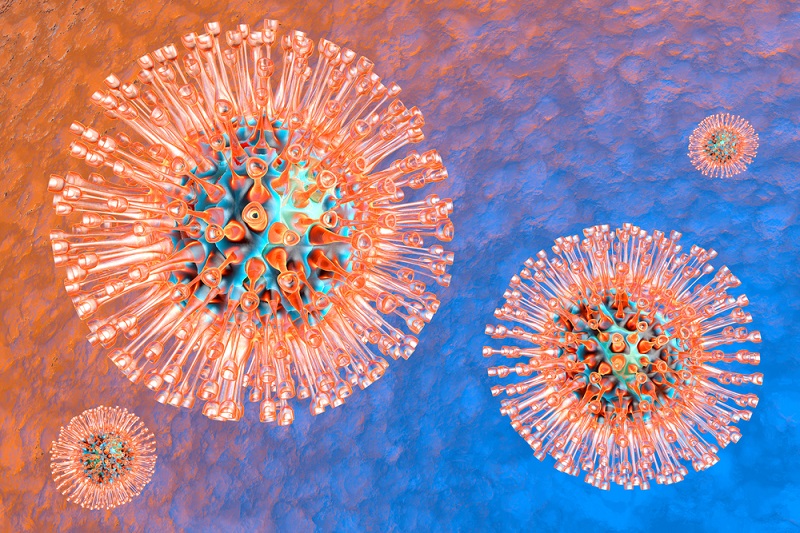Here's How Many Americans Now Have Herpes

Herpes infections have declined in the United States in recent years, according to a new report. However, about half of teens and adults under age 50 are still infected with the oral herpes virus, and about 1 in 8 have an infection with the genital herpes virus.
The new report, published today (Feb. 7) by the National Center for Health Statistics of the Center for Disease Control and Prevention (CDC), analyzed information from people in the U.S. ages 14 to 49 who had been screened for herpes in 2015 and 2016, as part of a national survey. The screening involved a blood test that looked for antibodies against two types of herpes viruses: herpes simplex virus type 1 (HSV-1), which most commonly causes oral herpes (cold sores), and herpes simplex virus type 2 (HSV-2), which causes genital herpes.
The results showed that, overall, about 48 percent of people in this age group had HVS-1, and about 12 percent had HSV-2. Infections were more common among older age groups — for example, 60 percent of people ages 40 to 49 had HVS-1, and 21 percent had HVS-2, while 27 percent of people ages 14 to 19 had HVS-1, and 0.8 percent had HVS-2, the report said. [Quiz: Test Your STD Smarts]
The study also found that the rates of both infections decreased over the period from 1999-2000 to 2015-2016. During this 16-year period, HSV-1 infection rates dropped by 11 percentage points, and HSV-2 infection rates dropped by 6 percentage points, the report said.
The decrease in HVS-1 and HSV-2 infections is good news, said lead author Geraldine McQuillan, an infectious-disease epidemiologist at the CDC.
"Once an individual is infected with HSV, they remain infected for life," McQuillan told Live Science. "Therefore, the only way we would see a decrease in our estimates is if there was a decrease in new infections."
The new report cannot determine the precise reason for this decline, however, the researchers said. An upcoming study, set to be published later this year, looks at risk factors for herpes, and that study will be better able to investigate the reason for the decline, McQuillan said.
Sign up for the Live Science daily newsletter now
Get the world’s most fascinating discoveries delivered straight to your inbox.
But several previous studies have found declines in HVS-1 infections in other industrialized countries. In those studies, researchers attributed the decline in HSV-1 to improved living conditions, better hygiene and less crowding, McQuillan said. HSV-1 is a highly contagious virus that is often contracted in childhood; it spreads through contact with the saliva or skin of an infected person, or by touching objects handled by an infected person, according to the American Academy of Pediatrics.
For HSV-2, "other studies that have seen a decline in HSV-2 in their populations have suggested that the increase in safe-sex practices in the post-AIDS-pandemic [period] may contribute to the decline in this virus, which is sexually transmitted," McQuillan said. (Previously, researchers documented a 19 percent drop in HSV-2 infections among Americans ages 14 to 49 from 1988 to 2004.)
Although herpes infections are lifelong, people with infections may not always have symptoms, because the virus can remain "dormant" for long periods, with symptoms flaring up from time to time, according to the National Institutes of Health. Symptoms of herpes infection can include sores in the mouth (for HSV-1) or genitals (for HSV-2). These sores can turn into blisters that become itchy and painful before healing, the NIH says.
Original article on Live Science.

Rachael is a Live Science contributor, and was a former channel editor and senior writer for Live Science between 2010 and 2022. She has a master's degree in journalism from New York University's Science, Health and Environmental Reporting Program. She also holds a B.S. in molecular biology and an M.S. in biology from the University of California, San Diego. Her work has appeared in Scienceline, The Washington Post and Scientific American.
Flu: Facts about seasonal influenza and bird flu
What is hantavirus? The rare but deadly respiratory illness spread by rodents











